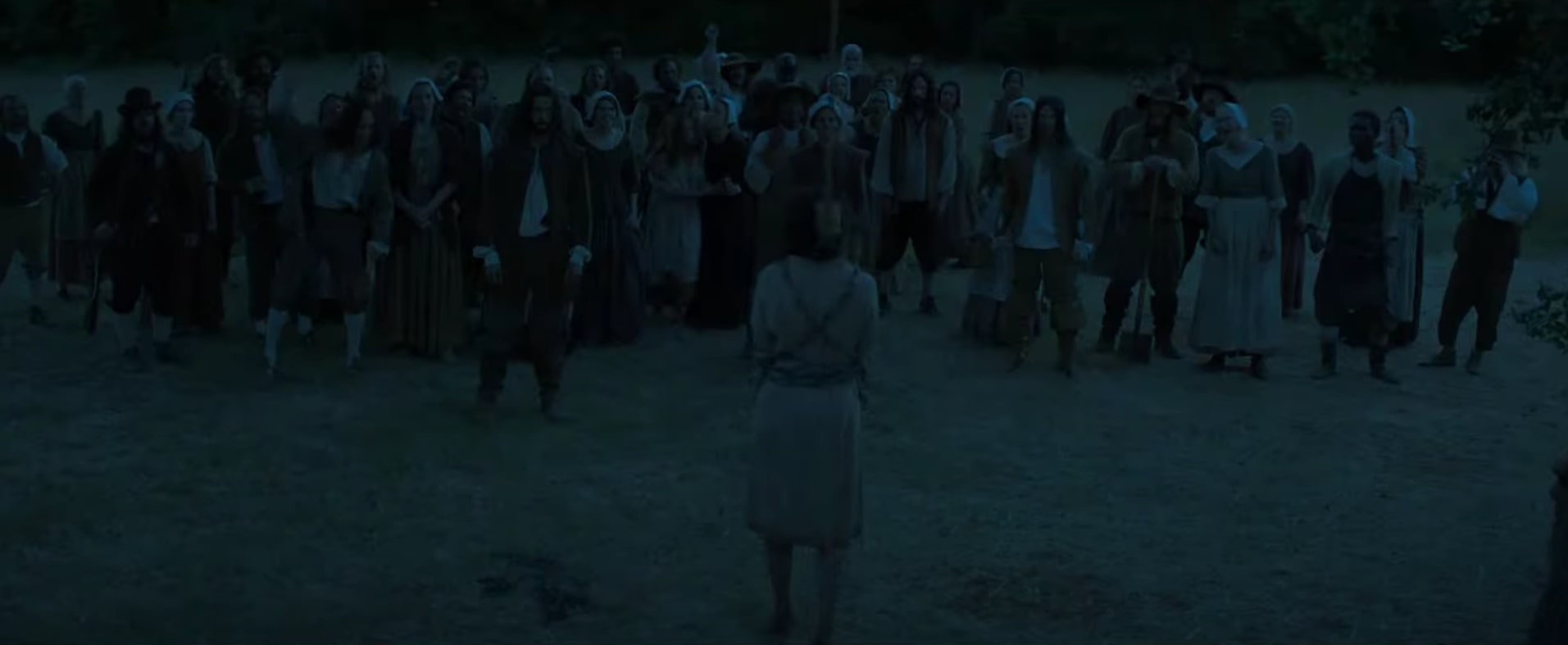Directed by Leigh Janiak (‘Honeymoon’), ‘Fear Street Part Three: 1666’ is the third and final entry in Netflix’s ‘Fear Street’ trilogy. In the film, Deena (Kiana Madeira) places Sarah Fier’s hand among the rest of her remains and witnesses the truth about the curse that has plagued Shadyside for 350 years. She discovers that the real Sarah Fier was as much a victim as anyone else in Shadyside, and the real perpetrator and their descendants have amassed a great fortune and prominence at the expense of the town.
The first half of the movie takes place in 1666, before the settlement known as Union became the towns Shadyside and Sunnyvale. It faithfully depicts the puritanical lifestyle in the American frontier, especially focusing on contemporary beliefs and superstitions. If this has made you wonder whether ‘Fear Street Part Three: 1666’ is based on a true story, this is what we know.
Is Fear Street Part Three: 1666 Based on a True Story?
No, ‘Fear Street Part Three: 1666’ is not based on a true story. The trilogy is inspired by celebrated children’s author R. L. Stine’s ‘Fear Street’ book series. Over the course of his lengthy career, Stine has published over 50 books in the original ‘Fear Street’ series. He has expanded the universe by publishing spin-off books belonging to ‘Fear Street Super Chiller,’ ‘99 Fear Street: The House of Evil,’ and ‘Ghosts of Fear Street’ series. Stine is also the author of the ‘Goosebumps’ and ‘Mostly Ghostly’ books, both of which have been turned into films.
While adapting the ‘Fear Street’ books for the big screen, Janiak, her partner Phil Graziadei, and the other writers transform Stine’s children’s horror setting into an R-rated gorefest. If ‘1994’ and ‘1978’ pay homage to the slashers of the 1990s and 1980s, respectively, then ‘1666,’ at least in its first half, slows things down and focuses on atmospheric horror in a similar vein as ‘The Witch’ and ‘The Wind.’

If we ignore the witchcraft part for a moment, we can realize that ‘1666’ offers an accurate depiction of mass hysteria and religious fanaticism in the American frontier. The film also unflinchingly shows what happened to free-thinking and non-traditional women in this period. One of the main reasons that Sarah is accused of witchcraft because someone from the settlement spots her being intimate with Hannah, the pastor’s daughter. For the puritans of ‘1666,’ this is a forbidden sin that can summon the Devil himself. There are several historical examples of what ‘1666’ depicts, with the Salem witch trials being the most prominent one. They took place between 1692 and 1693 in colonial Massachusetts and led to the hanging of 19 people. Several others perished in captivity, while one person died due to pressing.
Eventually, Governor William Phipps stopped the proceedings after he received a letter from the husband of one of the accused, and his own wife faced questions about witchcraft. What happened in Salem may be the most infamous case of a witch hunt, it’s far from being the only one. And ‘1666’ recreates that bleak part of American history, albeit with real witchcraft and Satanic rituals. Evidently, it’s understandable that an audience member may think that ‘Fear Street Part Three: 1666’ is based on true events, but that is not the case.


You must be logged in to post a comment.